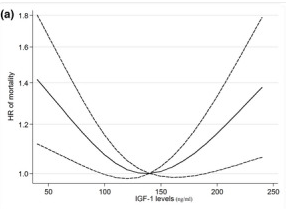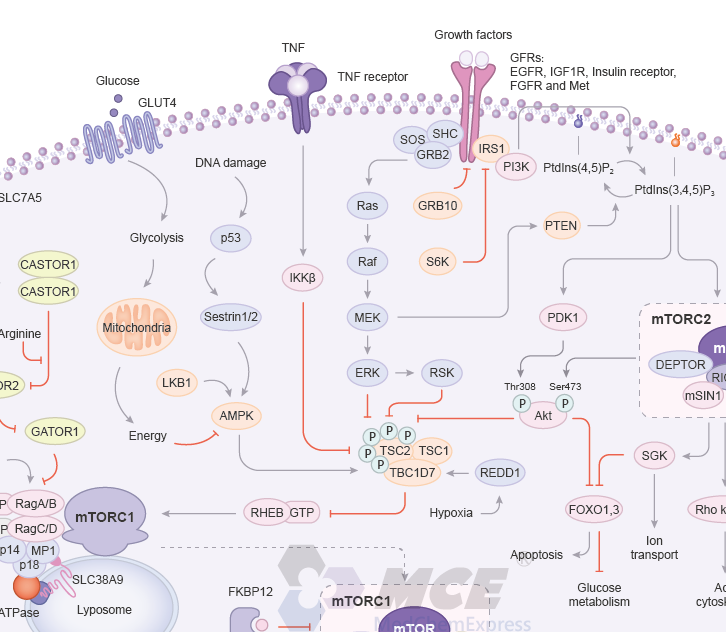So far I couldn’t find much recent material, the studies on IGF-1 and cancer appear mostly to date back to early 2000 and previously.
This Lancet article is interesting, but they are cautious in determining a substatial cause-effect relationship.
ArticlesVolume 363, Issue 9418p1346-1353April 24, 2004
Download Full Issue
Insulin-like growth factor (IGF)-I, IGF binding protein-3, and cancer risk: systematic review and meta-regression analysis
Dr Andrew G Renehan, PhDa arenehan@picr.man.ac.uk ∙ Marcel Zwahlen, PhDc ∙ Prof Christoph Minder, PhDc ∙ Sarah T O’Dwyer, MDa ∙ Prof Stephen M Shalet, MDb ∙ Prof Matthias Egger, MDc,d
Affiliations & NotesArticle InfoLinked Articles (1)
Summary
Background
Insulin-like growth factor (IGF)-I and its main binding protein, IGFBP-3, modulate cell growth and survival, and are thought to be important in tumour development. Circulating concentrations of IGF-I might be associated with an increased risk of cancer, whereas IGFBP-3 concentrations could be associated with a decreased cancer risk.
Methods
We did a systematic review and meta-regression analysis of case-control studies, including studies nested in cohorts, of the association between concentrations of IGF-I and IGFBP-3 and prostate, colorectal, premenopausal and postmenopausal breast, and lung cancer. Study-specific dose-response slopes were obtained by relating the natural log of odds ratios for different exposure levels to blood concentrations normalised to a percentile scale.
Findings
We identified 21 eligible studies (26 datasets), which included 3609 cases and 7137 controls. High concentrations of IGF-I were associated with an increased risk of prostate cancer (odds ratio comparing 75th with 25th percentile 1·49, 95% CI 1·14–1·95) and premenopausal breast cancer (1·65, 1·26–2·08) and high concentrations of IGFBP-3 were associated with increased risk of pre-menopausal breast cancer (1·51, 1·01–2·27). Associations were larger in assessments of plasma samples than in serum samples, and in standard case-control studies compared with nested studies.
Interpretation
Circulating concentrations of IGF-I and IGFBP-3 are associated with an increased risk of common cancers, but associations are modest and vary between sites. Although laboratory methods need to be standardised, these epidemiological observations could have major implications for assessment of risk and prevention of cancer.



